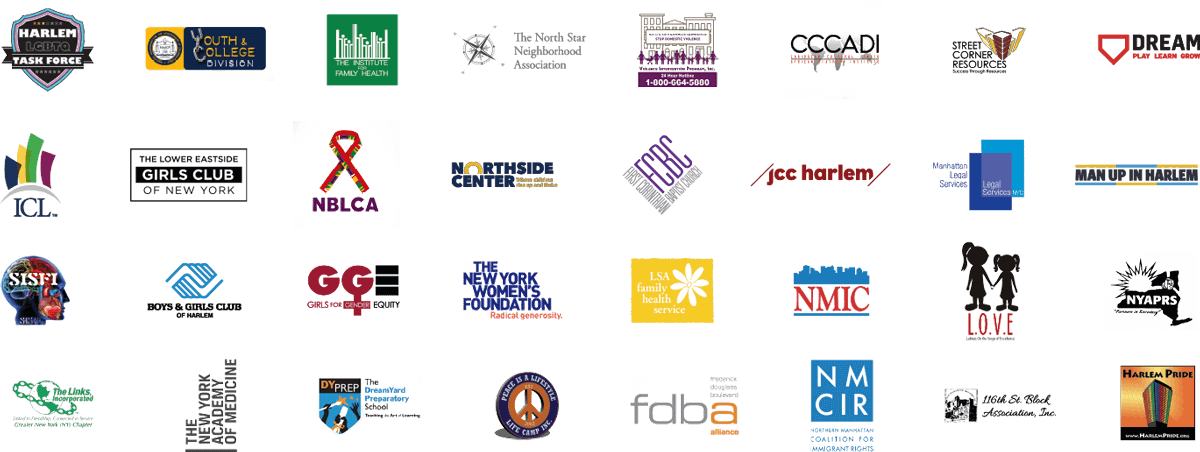To mark the annual International Suicide Prevention Awareness Day, Comunilife, Inc., and the McSilver Institute for Poverty Policy and Research at NYU Silver School of Social Work co-sponsored a community forum on the topic of suicide among Latina and Black male adolescents. The forum, held on September 6, 2017, at MIST Harlem, was supported by a coalition of elected officials and over 35 community based organizations who served as community co-sponsors. The evening convened more than 250 community residents and stakeholders to discuss why Latina and Black male youth are disproportionately affected by depression and suicide, and how families can seek help.
The discussion was moderated by Debralee Santos, the Editor-in-Chief of Manhattan Times and The Bronx Free Press. Panelists included: Dr. Rosa M. Gil, Founder, President and CEO of Comunilife, Inc., Dr. Michael A. Lindsey, Professor and Director of the McSilver Institute for Poverty Policy and Research at NYU Silver School of Social Work, NYS Assemblymember Carmen De La Rosa and Reverend Dr. Michael A. Walrond Jr., Senior Pastor of First Corinthian Baptist Church. NYU Silver School of Social Work Dean, Neil Guterman and Paulette Goddard, Professor of Social Work provided greetings and opening remarks. Presenter slides and a complete list of event co-sponsors can be found below.
Background
For Latina teens, the risk factors for suicide include family conflict (primarily with their mothers due to different levels of acculturation), stress, domestic/sexual abuse, academic failure and bullying. This is coupled with the stigma of mental illness in the Hispanic culture and the lack of culturally competent mental health providers. In 2017, these factors are heightened by the current political climate. Many families are experiencing fear and anxiety about immigration, including those in the United States legally. Regardless of immigration status, adolescents often share a sentiment of rejection by their own country or city; many internalize an identity as the “unwanted other.” Also regardless of their citizenship/immigration status, the fear of deportation and family separation leads to increased anxiety. Many Latina teens and their siblings report that they are afraid that when they get home from school their parents, family members, or friends will no longer be there.
For African-American young adolescent men, depression is often a precursor to suicidal behavior. This is a result of racial discrimination and other psychosocial stressors including police harassment and violence. Other contributing factors can include dysthymic disorder, which has the same cognitive and physical problems as depression with less severe but longer-lasting symptoms; substance abuse; and physical and emotional abuse.
In June 2016, the Center for Disease Control (CDC) released the 2015 Youth Risk Behavior Survey which includes questions related to suicide ideation and attempted suicide.
Latina Teens
| Felt Sad or Hopeless | Seriously Considered Suicide | Attempted Suicide | Injurious Suicide Attempt | |
| City-wide | 40.9% | 18.5% | 13.2% | 3.8% |
| Manhattan | 41.4% | 19% | 12% | 3.8% |
Black Adolescent Boys
| Felt Sad or Hopeless | Seriously Considered Suicide | Attempted Suicide | Injurious Suicide Attempt | |
| City-wide | 20.7% | 8.6% | 6.3% | 2.8% |
| Manhattan | 19.3% | 7.5% | 6.7% | 4.5% |
In New York State suicide is the second leading cause of death for all teens ages 15 to 19. The statistics show startling differences between Latina teens and Black adolescent boys, with the girls more likely to seriously consider suicide but with Black male youth more likely to cause greater harm to themselves and complete suicide.
For both Latina teens and Black male youth, the prevalence of suicide has increased with the children getting younger and younger. From 1999 to 2014, Black adolescents ages 10-14 had a 79% increase in the rate of death by suicide, a higher increase than among youth in any other racial/ethnic group. A 2015 study found that the rates of suicide among Black youth, particularly those transitioning to adolescence (ages 10–11), doubled between 1993 and 2012. African American boys ages 5 to 11 are the only age group where the rates of suicide among African Americans are actually higher than rates among all youth racial and ethnic groups.
In speaking about the rationale for organizing this event, Dr. Michael A, Lindsey, Professor and Director of the NYU McSilver Institute shared, “In my experience as a clinician and researcher, there is a perception that suicide is not an issue that impacts youth of color. The impetus for co-sponsoring this event with Comunilfe was to shine the light for parents, service providers and teachers about the realities concerning the prevalence of suicide, particularly among Latina and Black male youth. Our objective was to distill the data and research to create better awareness regarding the signs of mental distress and provide a better understanding of how poverty, bullying, violence and incarceration enhance risks that may lead to suicide as well as create more opportunities to bring the conversation regarding mental health within communities of color.”
In his remarks during the roundtable discussion, Dr. Lindsey underscored the need to de-stigmatize what it means to ask for help, particularly in the case of changing the narrative around adolescents of color and how school based mental health services could be an important first step in this regard. Dr. Lindsey further expanded on this point by referencing the important work of the McSilver Institutes Step Up program, which is a mental wellness program within five New York City public schools, and provides supportive services for teens living within poverty impacted communities and experiencing challenges. The program, led by social workers at the McSilver Institute, has resulted in significantly higher rates of academic achievement and a positive transition to young adulthood.
At the conclusion of the program, participants echoed the need to continue to raise awareness about this important issue and devise strategies to inform parents, service providers and schools regarding resources, best practices and models for responding to youth experiencing distress and how factors such as poverty, violence and incarceration can exacerbate feelings of anxiety and depression which may lead to ideation or suicide. Most importantly, it was agreed that collectively we must do more to let youth know that they are not alone.
For more information regarding the McSilver Institute at the NYU Silver of Social Work, please explore our website, connect on Twitter and Facebook, and sign up to receive email updates.
NYU Silver School of Social Work Dean Dr. Neil Guterman delivering opening remarks at the forum.
Forum Speakers and Panelist from Left To Right:
Dr. Michael A. Lindsey, Professor and Director of the NYU McSilver Institute for Poverty Policy and Research, Reverend Dr. Michael A. Walrond Jr., Senior Pastor of First Corinthian Baptist Church, Dr. Rosa M. Gil, Founder, President and CEO of Comunilife, Inc., Debralee Santos, the Editor-in-Chief of Manhattan Times and The Bronx Free Press, and NYS Assemblymember Carmen De La Rosa.
Speakers and Presenters
Debralee Santos (Moderator)
Editor, The Bronx Free Press and The Manhattan Times
Rose Pierre-Louis (Presenter)
Chief Operating Office, NYU McSilver Institute
Carmen De La Rosa (Panelist)
New York State Assemblywoman, Assembly District 72
Dr. Rosa M. Gil (Panelist)
Founder, President and CEO, Comunilife, Inc.
Dr. Michael A. Lindsey (Panelist)
Director, NYU McSilver Institute
Rev. Michael A. Walrond, Jr. (Panelist)
Senior Pastor, First Corinthian Baptist Church
Nivia Dones (Guest Speaker)
Parent Advocate
Dr. Neil B. Guterman (Special Guest)
Dean, NYU Silver School of Social Work
Download Slides
Dr. Michael Lindsey’s Presentation
Additional Featured Statistics
Community Co-Sponsors
New York City Mayor Bill de Blasio
New York City First Lady Chirlane McCray
New York City Comptroller Scott M. Stringer
New York City Public Advocate Letitia A. James
New York City Council Speaker Melissa Mark-Viverito
Congressman Adriano Espaillat
Manhattan Borough President Gale A. Brewer
Bronx Borough President Ruben Diaz Jr.
Assemblymember Herman Denny Farrell
Assemblymember Carmen De La Rosa
Assemblymember Inez E. Dickens
Assemblymember Robert J. Rodriguez
State Senator Marisol Alcantara
State Senator Brian A. Benjamin
State Senator José M. Serrano
Councilmember Mark Levine
Councilmember Ydanis Rodriguez
Councilmember Bill Perkins
Manhattan Community Boards 9, 10, 11 and 12

